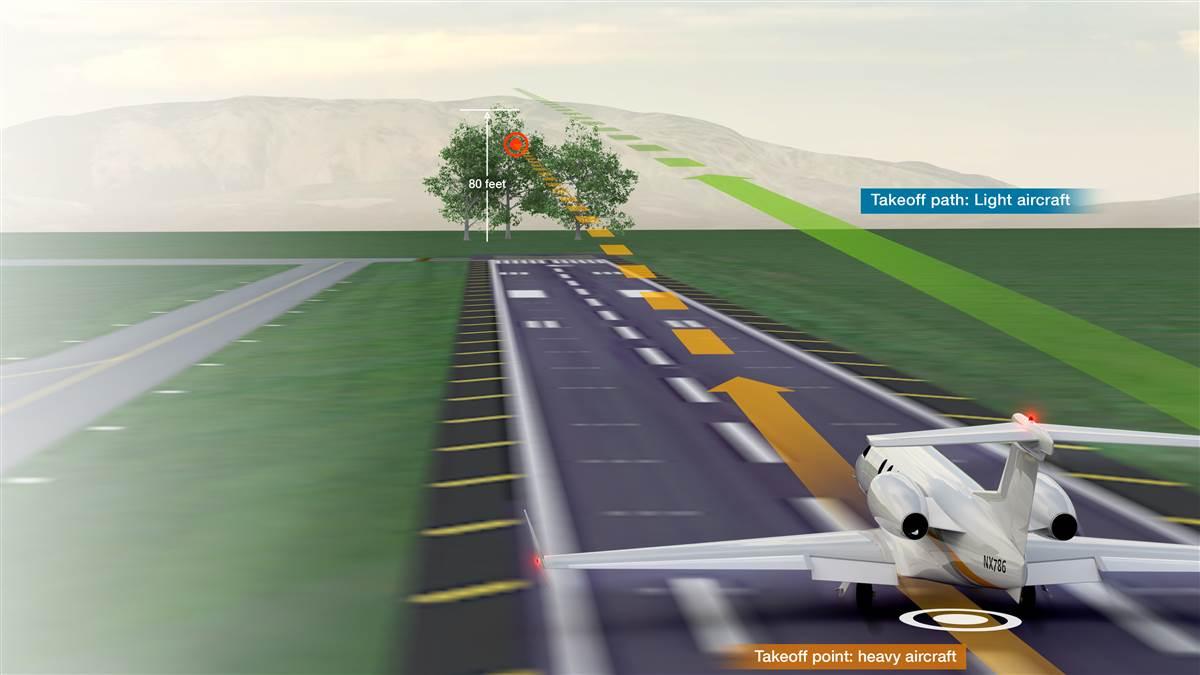Mentor Matters: Takeoff Weight Limits
Many calculations can go into deriving a single number

Starting with the most basic limitations, the pilot must observe the certified structural limits of the aircraft. In the absence of any other performance considerations, jets have a maximum takeoff weight (MTOW) and maximum zero fuel weight (MZFW) to consider. MTOW is straightforward, but MZFW can be easy to overlook, as it’s commonly not a limiting factor.
MZFW is simply how much the aircraft can weigh, not taking into account usable fuel. Because the wings essentially suspend the aircraft cabin, the weight of the structure, passengers, and bags is always pulling down against the wing root and spars. MZFW limits how much pulling against the wing root the airplane will experience, which is especially important in gusts or turbulence. Most light jets have a fairly high MZFW relative to the number of passenger seats. But the rare flight—with the seats full of heavy passengers and baggage compartments loaded to capacity—will exceed the MZFW for almost any aircraft, so it can’t be overlooked entirely.
Maximum landing weight (MLW) is also easily overlooked. MLW affects MTOW when the flight duration is so short that fuel burn will be less than the difference between MLW and MTOW. Consider a Citation CJ3 with a MTOW of 13,870 pounds and an MLW of 12,750 pounds planning a flight from a Boston satellite airport to Nantucket. With an en-route fuel burn of 600 pounds, a pilot who took off at MTOW would find himself on short final to Nantucket weighing 13,270 pounds—that’s 520 pounds heavier than the landing gear is designed to absorb. So for this flight, the aircraft would have a takeoff weight limit of MLW plus planned fuel burn, or 13,350 pounds.
Once structural issues have been calculated, the real fun starts: determining performance limits to takeoff weight. Here the intersection of environmental factors and the particulars of the airport environment must be considered in three distinct ways, the most restrictive of which will determine the takeoff weight limit.
First—and most obvious—the pilot needs to consider the runway length available for takeoff. Every jet with a MTOW more than 6,000 pounds is certified in such a manner that an engine failure at any point in the takeoff roll should leave the pilot able either to abort and stop on the pavement, or to continue and climb on one engine. When the pilot consults takeoff performance charts for a given set of conditions (primarily altitude and temperature) and finds the aircraft will require 4,500 feet at MTOW, for example, what the chart is really saying is that both the “accelerate-stop” and “accelerate-go” distances for that takeoff are equal to or less than 4,500 feet. Should the pilot be departing from a runway with only 4,000 feet of available pavement, then, a MTOW takeoff is not legal. In this case, the takeoff weight is runway limited.
The next limit relates to another set of guarantees to which the airplane is certified: the ability to achieve a prescribed climb gradient (or angle) following the loss of an engine during takeoff. Certification rules require this gradient to be 2 percent or greater. Once the aircraft’s landing gear are fully retracted, but before the flaps have been changed from the takeoff setting, it’s said to be in its “second segment” of the takeoff climb profile. The aircraft must be operated at a weight—given the conditions—that will produce a second segment climb gradient of no less than 2 percent. That’s the gradient that the manufacturer’s test pilots were able to demonstrate during engine-out, second-segment climb gradient trials.
After the aircraft has accelerated to a safe speed to operate without flaps, fully cleaned up, and with thrust reduced to a setting without a time limit (takeoff thrust is typically limited to 10 minutes), the airplane must now climb at no less than a 1.2 percent gradient. If, for a given altitude and temperature, the aircraft can’t meet the required gradients at MTOW, then MTOW takeoffs aren’t allowed. Instead, the manufacturer will provide a climb-limited takeoff weight.
Finally, understand that climb limits simply ensure that minimal certification requirements for engine-out climb are met. What they don’t ensure is that the aircraft will be able to out-climb terrain or obstacles. This last issue drives what is often the most restrictive takeoff limit—the obstacle-limited takeoff weight.
While obstacle limits are intuitively understood to be an issue departing from a mountainous area, even run-of-the-mill obstacles often limit takeoff weight. Trees, for example, grow much higher than the 35 feet agl that our accelerate-go performance charts assume. At smaller airports there may not be much distance between the end of the runway and the tree line, increasing the angle needed to out-climb obstacles. Consider that clearing an 80-foot pine tree 1,000 feet from the departure end of a runway requires a 4.5 percent gradient. In this case, if MTOW won’t allow an engine-out 4.5-percent gradient to be achieved, the aircraft will be obstacle-limited to a takeoff weight that will. There’s no free ride; heavy loads will dramatically compromise climb rates—especially engine-out climb rates—and so passengers, bags, or fuel (or all three!) must be left behind.
Author Neil Singer is a Master CFI with more than 8,500 hours in 15 years of flying.


